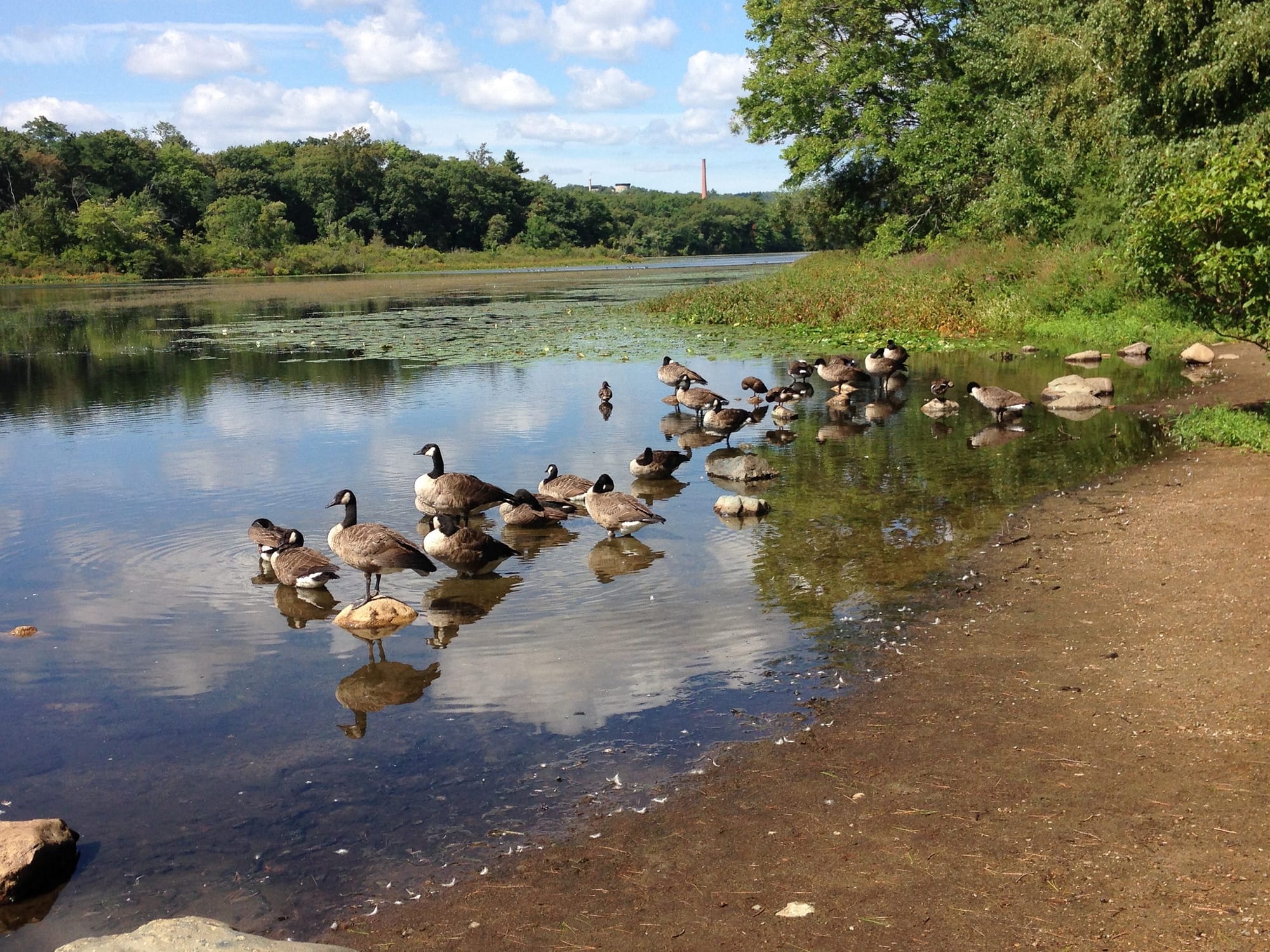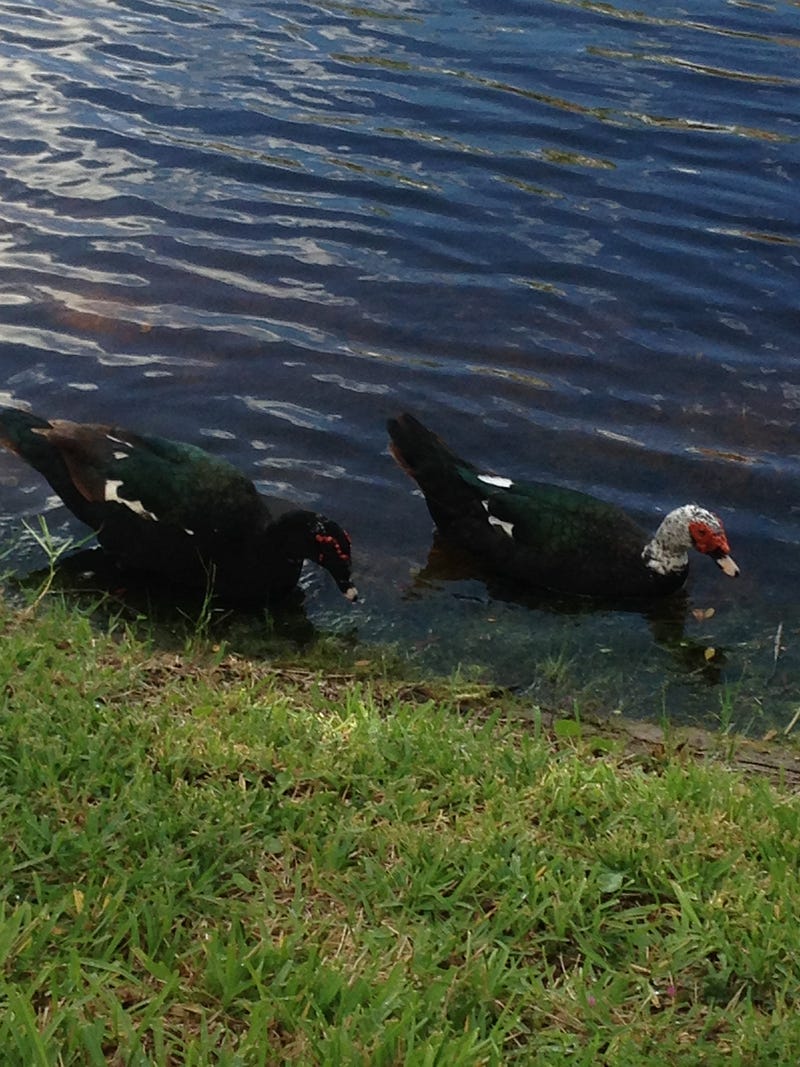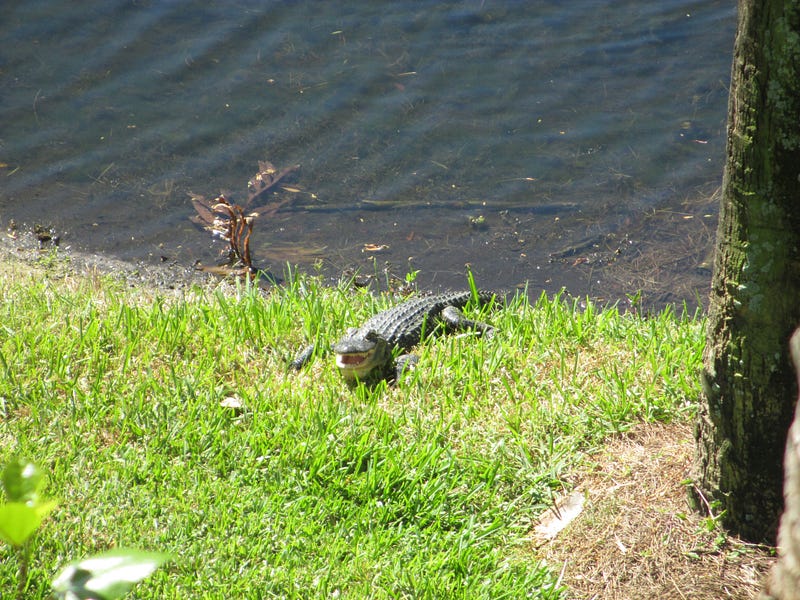
Last time, we talked about how giving names to individual animals has the potential to blur the lines between wildlife and pets. Right now, I want to talk about one way that blurred line can cause problems: feeding wildlife.
‘Feeding the ducks’ is an age-old practice, and I will acknowledge how relaxing it can feel, as it creates a feeling of connection between us and nature. The picture above was taken at a park near where I grew up. It abuts the Charles River in a Boston suburb. As a child, this place was popular for feeding the ducks and geese that would congregate there.
This practice is now discouraged, including signs indicating that it is prohibited, both there and in other locations (including down here in Florida). What changed? For one, we have a better understanding of the negative effects that feeding wildlife can have. Doing so can foster dependency and lead to nuisance behavior, such as begging or even chasing people for food handouts.

That picture is a pair of Muscovy ducks, Cairina moschata, in a small pond that I see from my window as I write these stories. This particular species of duck are not native to Florida. They have established some small breeding populations and are considered an invasive species. They have few to no native predators and are well-adapted to live in the developed areas of the state, thanks to the abundance of natural and man-made ponds.
When I first moved to my current abode, we had a trio of the ducks that liked to hang around our ponds. Since then, they have hatched a full brood that have grown to adult size. The ducklings are cute at first, but they don’t stay that way. I have not personally witnessed any of my neighbors feeding these ducks, but it would not surprise me if they had.
One of the first hallmarks of a wild animal having been fed is that it loses fear of human contact. Most wildlife will flee from humans, as we are large animals and therefore threatening. If a wild animal actively approaches you instead of moving away, then it is usually safe for you to assume that the animal has been fed by people in the past. Feeding Muscovy ducks contributes to their spread and the potential for them to out-compete native duck species.
Feeding wildlife doesn’t just cause problems when they are non-native, either. One of the most ubiquitous wild animals in Florida is the American alligator, Alligator mississippiensis, like the one pictured below.

This animal is one of the great conservation success stories. Hunting and habitat loss had devastated their populations, but conservation efforts have allowed them to recover to the point where they are no longer listed as a threatened species. One of the points I tend to include when sharing stories about alligators with people is that a good rule in Florida is ‘if there is a body of fresh water large enough for a gator, assume there is one living there.’
Unfortunately, feeding an alligator, just like with a duck, can lead to nuisance behavior. The animal will no longer fear people. Instead, it will seek them out as an easy food source. However, unlike the ducks, which can be mildly annoying when they pester you for food, a gator is a dangerous predator. While wild individuals do not usually attack humans (in Florida, there have only been 5 attacks per year on average since 1948), feeding an alligator makes it much less wild and increases the potential for such an attack. For this reason, it is against state law to feed alligators.
What does this have to do with naming animals? To conclude, I want to share with you a story that is very personal to me. As I have mentioned several times, I am a reptile lover. Sea turtles are my favorite, but I also love snakes, lizards, and alligators. Thus, I dislike when people cause harm to these creatures because of carelessness or stupidity. Both were evident in the example of Charlie the SoVi alligator.
Charlie was an alligator that lived on the campus of Florida Gulf Coast University in Fort Myers, where I attended graduate school. SoVi is short-hand for South Village, one of the residential areas on campus. This individual was frequently spotted in the pond next to the dining area there. The students treated him much like a mascot; he even had his own Facebook page. Unfortunately, the proximity to food meant that it was all too easy for students to feed the gator.
He began displaying the classic signs of a nuisance alligator. Those of us in Environmental Science were concerned with this development and tried to relocate him to elsewhere on campus. Unfortunately, because the ponds on campus are connected to each other via an underground tunnel system, he managed to make his way back to the pond by SoVi Dining. The end result was all too predictable. Gators that have been fed are ‘destroyed’. The students treated this alligator like a pet. They gave it a name, they fed it, and because of that they essentially handed it a death sentence.
So, I ask you all, please reconsider actively feeding wildlife, of any sort. In the end, you are not helping it and may actually be doing harm, either to it or to other people. That said, there are more ‘natural’ ways to go about this that do not result in the nuisance behaviors I mentioned here. I’ll touch on one eye-catching example for next time.